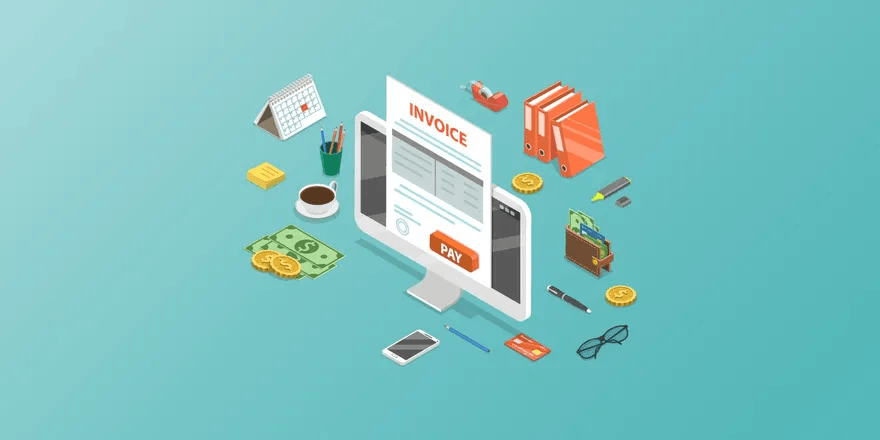You will never hear anyone say, “calling and emailing clients about past due bills is my favorite part of the job.” Still, anyone who has ever worked with business clients has had the dubious pleasure of this experience. Whether you are a freelance web designer or have a small marketing agency, you’ve no doubt had your fair share of chasing down missed or late payments.
According to a
2019 study commissioned by Freelancers Union, which represents over 56 million independent workers across the U.S., 74% of freelancers have experienced nonpayment or late payment from clients.
A
previous study by the union found that, in 2014, the average freelancer waited as many as 98 days for some of their most persistently late clients to pay for goods and services. Of those freelancers who had trouble getting paid, 34% reported they were not paid at all for at least a portion of their work. The study also suggested that the average freelance worker lost $5,968 on missed payments that year, which accounted for 13% of their total income.
B2B payments news site PYMNTS.com estimated in a 2019 report that U.S. firms are owed $3.1 trillion in accounts receivable on any given day. The report also found that 27.5% of firms that frequently receive late payments are also paying their own suppliers late.
In 2012,
The Wall Street Journal reported that 64% of small businesses have invoices that were not paid 60 days or more past their due date, and 14% of the SMBs questioned named late payments as their most significant business challenge. While the report also suggested that the larger the client, the more likely they are to make you wait for your money, this has been known to happen even with the smallest of clients.
This common situation, where you find yourself chasing down payments, is extremely bad for business for many reasons. For one, it cheapens your relationship with clients. After working so hard to create a personal and professional connection, the last thing you want to do is turn it into a transaction-focused relationship.
Such relationships (e.g., the purchase of a soda can at a gas station) in which the customer picks any product off the shelf, pays for it, and is on their way, are inherently fleeting and impersonal. They simply serve a function and are devoid of any sense of loyalty.
This cat and mouse chase can also create mutual resentment. The more you chase a particular client, the more your frustration is likely to influence the language and tone you use with them. The client, on the other hand, might interpret your persistence as a sign of mistrust, making them less likely to continue a relationship with you.
Another obvious downside is the waste of time and attention that could better be spent on doing what you actually love and not on repeated phone calls and email reminders.
Lastly, not getting paid on time hurts your cash flow and might become a serious issue when you need to pay your own vendors, creating a cycle of delays and frustrations.
Now that we’ve established how damaging chasing payments can be for your business, here are three things you can do to avoid it altogether.
- Be clear — When you send out an invoice or a payment request, make sure to clearly communicate your payment terms to the customer. Mention precisely when the money is due and set the stage by outlining the potential outcome of payments not arriving on time (e.g., a late fee). You can also choose to reward early payments with a small discount or a branded gift, which can go a long way in motivating customers to pay their tabs.
- Make your clients’ lives easier —
The easier you make it for your clients to pay you, the more likely you are to receive your cash on time. Consider offering flexible payment options, including bank transfers or credit cards. The ability to make payments online and through mobile devices can be a game-changer as it allows your clients to pay at their convenience — any time, anywhere. Also, always make sure your clients have all the necessary, up-to-date information to complete the payment, including your mailing address for checks or your bank information for a transfer.
- Use digital tools — The numerous challenges brought on by the COVID-19 pandemic led many businesses to digitize some of their operations, and payments are no exception.
Using a digital accounts receivable (AR) tool like Melio to manage incoming payments enables you to easily request, track, and receive payments, which minimizes hassle for both you and your clients.
Some tools offer an array of payment methods to make your clients’ lives easier without affecting how you get paid. They also enable you to input bank details or personal information securely, so they are always up to date. Best of all, these digital tools give clients the flexibility of paying online or directly from their mobile devices. They also support scheduling payments in advance to prevent absent-minded tardiness on the part of payers.
Getting paid on time is essential for the smooth operation of any business and using a digital AR tool makes this process easier and more efficient, reducing cash flow issues, saving time, and improving your relationship with clients.
So, this year, stop chasing payments and start digitizing your accounts receivable to get paid on time, every time.
About Melio
Melio is on a mission to keep small businesses in business by providing a smart B2B payment solution tailor-made for their needs. Melio’s digital accounts payable and receivable dashboard provides a single, integrated tool that allows small businesses to transfer and receive payments in a faster, easier way, giving oversight and control over cash flow, eliminating late payment costs, and giving businesses back valuable time.
About the Writer
Tofi Stoler is a content manager at Melio. She previously covered the Israeli tech scene for CTech, the English web-magazine by Israel’s largest financial newspaper, Calcalist








